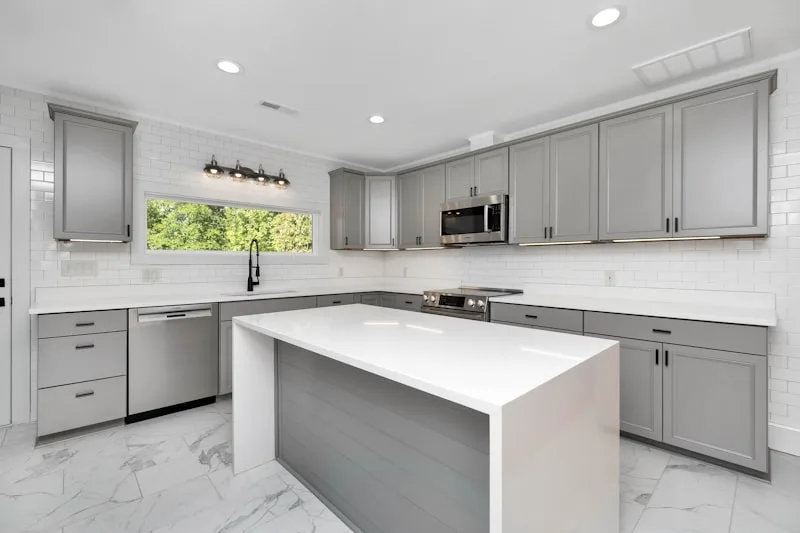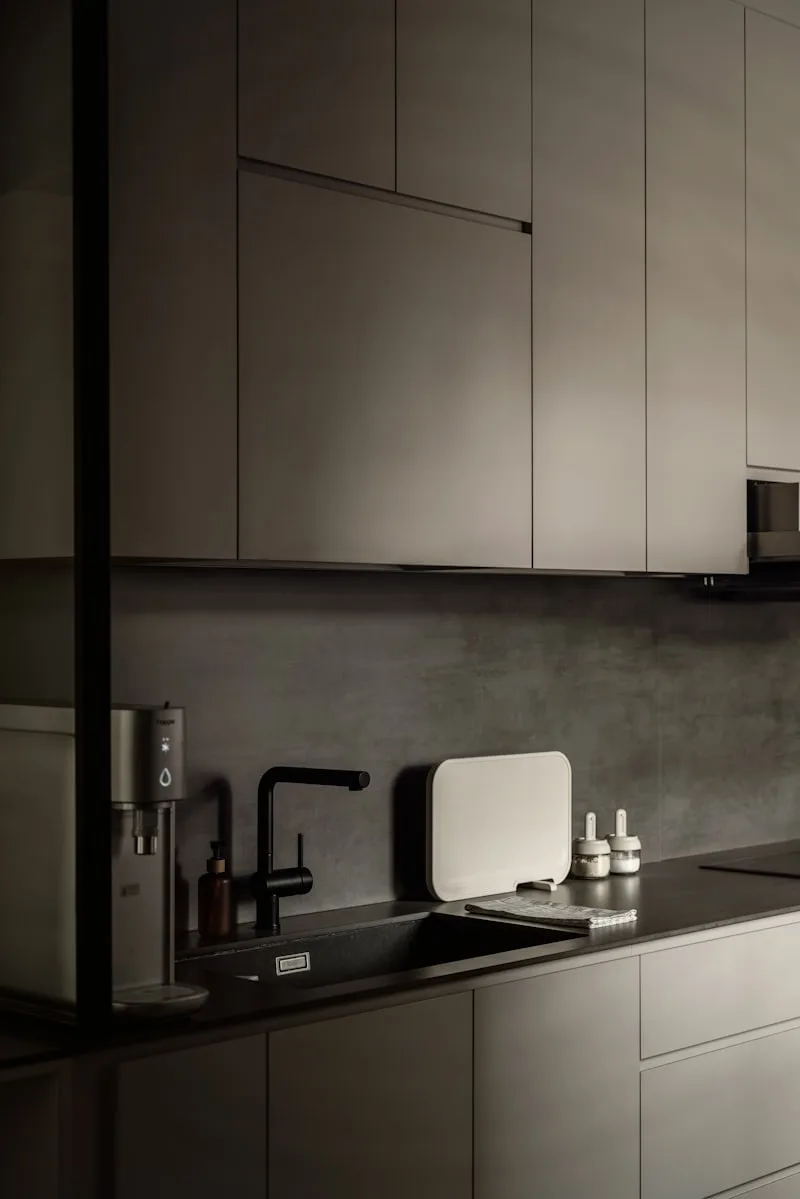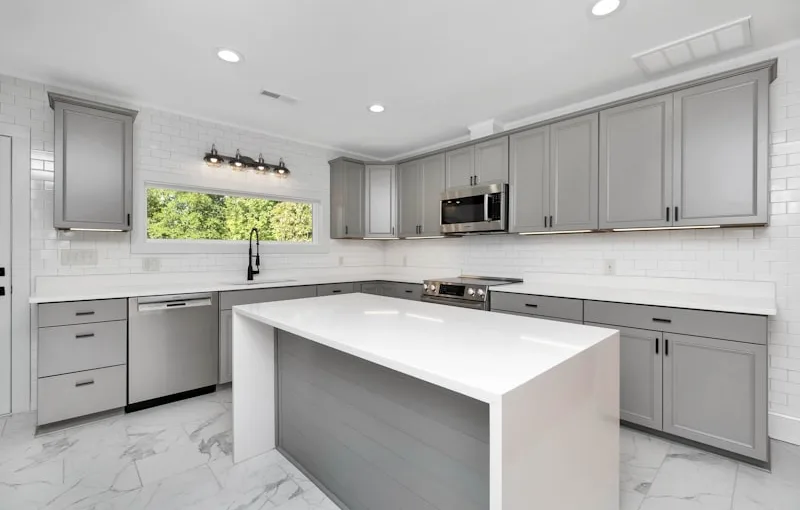
One of the main reasons cabinets often stop short is the sheer practicality of access. Let’s face it: if your cabinets were a foot higher, you’d need a ladder just to grab that elusive spice jar hiding in the back. Most of us aren’t exactly gymnasts, and reaching for those top shelves can turn into a mini workout. By leaving a little space, it’s easier to grab what you need without a balancing act.

Then there’s the aesthetic factor. Designers often aim for a balanced look, and cabinets that don’t reach the ceiling can create a sense of openness. Think of it like a well-structured story; you want a beginning, middle, and end. A gap at the top can help frame the kitchen, making it feel more inviting and less cramped. Plus, that little space can be a perfect spot for decorative touches—maybe a plant or some stylish cookbooks.
The Space Above: Unpacking the Mystery of Non-Ceiling-High Kitchen Cabinets
First off, let’s talk about the aesthetics. These cabinets create an illusion of height, making your kitchen feel more open and airy. It’s like giving your room a breath of fresh air! Plus, the space above can be a canvas for creativity. You can showcase decorative items, plants, or even a collection of cookbooks. Imagine a beautiful ceramic vase or a stack of vintage jars peeking down at you while you whip up dinner. It adds personality and warmth to your kitchen.
Now, let’s not forget about functionality. Non-ceiling-high cabinets can be a blessing in disguise. They’re easier to access, especially for those of us who aren’t exactly basketball players. No more climbing on counters or using a step stool to reach that elusive spice jar! And if you’re someone who loves to entertain, these cabinets can double as a perfect spot for displaying your favorite glassware or serving platters.
But wait, there’s more! The gap above those cabinets can also be a great place for clever storage solutions. Think about it: you can tuck away seasonal items or rarely used appliances, keeping your kitchen clutter-free. It’s like having a secret hideaway for your kitchen gadgets!
Design Dilemma: Why Most Kitchen Cabinets Stop Short of the Ceiling
First off, it’s all about practicality. Many homeowners opt for standard cabinet heights, which typically leave a few inches of space above. This gap can be a blessing in disguise. It allows for easier installation and gives a little wiggle room for any ceiling irregularities. Imagine trying to fit a square peg in a round hole—frustrating, right? That’s what it would be like if cabinets were designed to touch the ceiling in every home.
Then there’s the issue of ventilation. Kitchens can get steamy, and having that little bit of space helps air circulate. Think of it as a safety valve; it prevents moisture from getting trapped, which can lead to mold and mildew. Nobody wants a kitchen that smells like a damp basement!
Aesthetically, leaving that gap can also create a visual break, making the kitchen feel more open and airy. It’s like wearing a well-fitted shirt; it just looks better! Plus, it gives you a chance to showcase some decorative items or plants up there, adding a personal touch to your space.
The Aesthetic Choice: Exploring the Trend of Lower Kitchen Cabinets
Lower kitchen cabinets are all about creating a sense of openness and flow. They draw the eye downward, making the space feel more inviting and less cluttered. Think of them as the foundation of your kitchen’s personality. When you opt for lower cabinets, you’re not just choosing storage; you’re making a statement. It’s like choosing a solid pair of shoes that ground your entire look.
Plus, let’s talk about functionality. With lower cabinets, you can easily access your pots, pans, and all those kitchen gadgets without having to stretch or climb. It’s like having a personal assistant that’s always within reach! And if you’re a fan of open shelving, pairing it with lower cabinets creates a beautiful contrast that adds depth and character to your space.
Function vs. Form: The Practical Reasons Behind Short Kitchen Cabinets
First off, let’s talk about practicality. Short kitchen cabinets make it super easy to access your favorite spices or that elusive can of beans hiding in the back. No more climbing on tiptoes or using a step stool like you’re auditioning for a circus act! With everything at eye level, you can whip up your culinary masterpieces without the hassle. Plus, they create a more spacious feel, making your kitchen look larger and less cramped. It’s like giving your kitchen a breath of fresh air!
Now, let’s not forget about aesthetics. Short cabinets can add a unique flair to your kitchen. They allow for open shelving above, where you can showcase your beautiful dishware or quirky kitchen gadgets. It’s like turning your kitchen into a gallery of your culinary adventures! And if you’re a fan of natural light, short cabinets can help keep your space bright and airy, letting sunlight dance around your kitchen.
But wait, there’s more! Short kitchen cabinets are also a fantastic choice for those who love to entertain. They create a more inviting atmosphere, encouraging guests to mingle and chat while you cook. It’s like having a cozy gathering spot right in the heart of your home. So, whether you’re a culinary whiz or just love to host, short cabinets offer the perfect blend of function and form, making your kitchen the heart of your home.
Frequently Asked Questions
Are There Design Trends Favoring Shorter Kitchen Cabinets?
Recent design trends indicate a growing preference for shorter kitchen cabinets, which can create a more open and spacious feel in the kitchen. This style allows for easier access to items and can enhance the overall aesthetic by drawing the eye upward, especially when paired with taller backsplashes or open shelving. Homeowners are increasingly opting for this approach to achieve a modern, functional kitchen layout.
What Are the Benefits of Not Having Ceiling-Height Cabinets?
Opting out of ceiling-height cabinets can enhance the sense of space in a room, making it feel more open and airy. It allows for easier access to items stored in lower cabinets, reducing the need for step stools. This design choice also provides opportunities for decorative displays on top of shorter cabinets, adding character to the space. Additionally, it can simplify cleaning and maintenance, as there are fewer hard-to-reach areas.
Can I Install Cabinets That Reach the Ceiling in My Kitchen?
Installing cabinets that reach the ceiling in your kitchen can maximize storage space and create a seamless look. Ensure that your kitchen’s layout and ceiling height can accommodate this design. Consider factors like accessibility for upper shelves and the overall aesthetic of your kitchen. Proper installation is key to achieving a functional and visually appealing result.
Why Don’t Kitchen Cabinets Extend to the Ceiling?
Kitchen cabinets often do not extend to the ceiling for several practical reasons. This design choice allows for easier access to items stored on top, provides a visual break that can enhance the kitchen’s aesthetic, and accommodates standard ceiling heights. Additionally, leaving space above cabinets can help with ventilation and reduce the risk of moisture damage.
How Does Ceiling Height Affect Kitchen Cabinet Design?
Ceiling height plays a crucial role in kitchen cabinet design, influencing both aesthetics and functionality. Higher ceilings allow for taller cabinets, maximizing storage space and creating a more spacious feel. Conversely, lower ceilings may require shorter cabinets or the use of open shelving to maintain proportion and accessibility. Proper consideration of ceiling height ensures that cabinets are both visually appealing and practical for everyday use.
